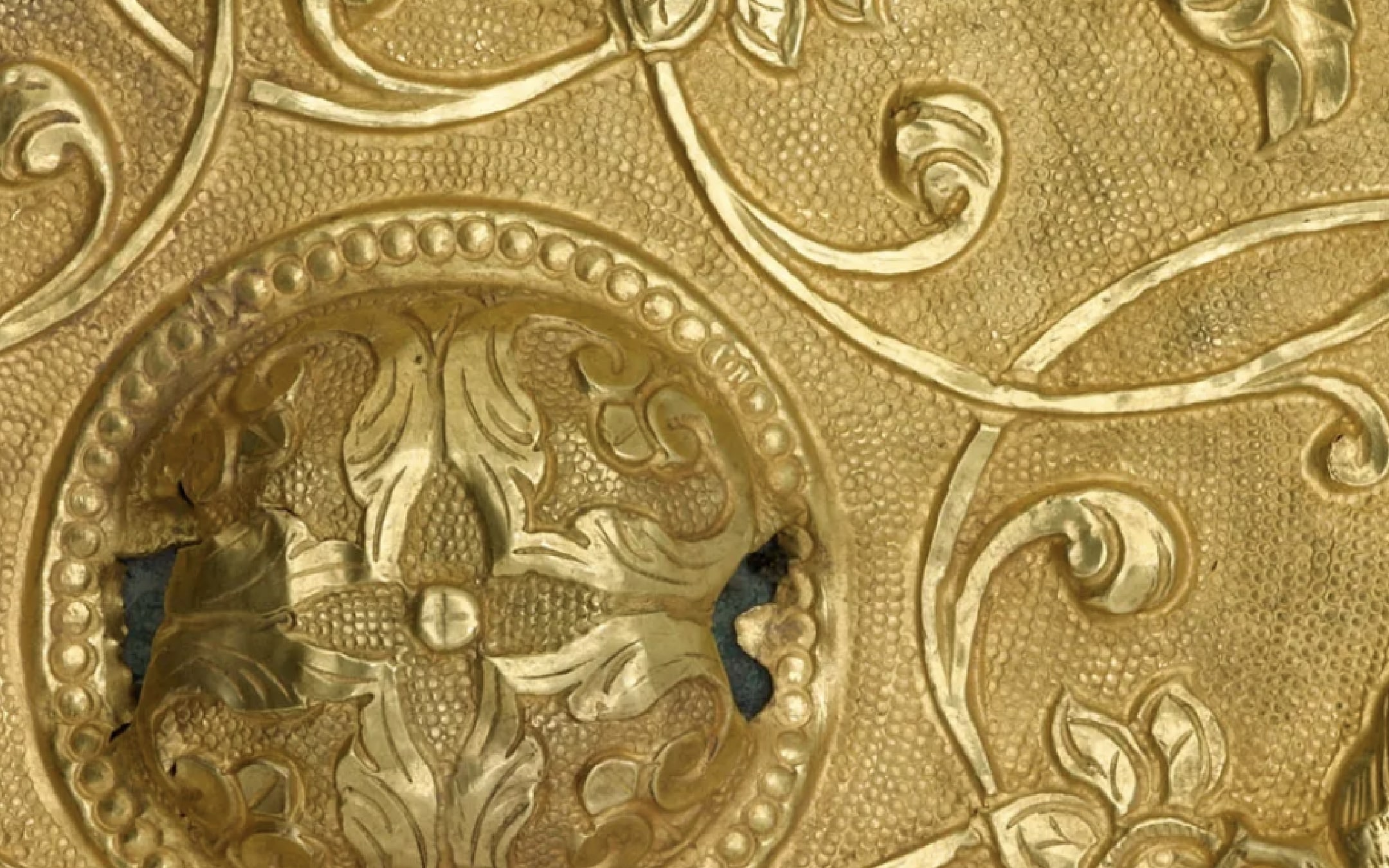8 Mindfulness Activities at NMAA

June 20, 2025 | National Museum of Asian Art
An activity is usually considered “mindful” if it helps you slow down and feel more present both mentally and emotionally. Typically, these activities focus on your senses, such as sight or sound, so you can ground yourself in your body and your immediate surroundings.
Today’s popular understanding of mindfulness has roots in ancient Hindu and Buddhist traditions. Beyond spiritual traditions, many Asian cultures value slow, intentional, or meditative practices. At the National Museum of Asian Art, we try to make spaces for our visitors to appreciate such traditions and their influence on art and history.
Here’s a roundup of eight opportunities to engage in mindfulness, both in our galleries and online:
1. Join a weekly online meditation session
Local meditation teachers lead our virtual Meditation and Mindfulness sessions every Tuesday and Friday. Friday sessions include inspiration from art in the museum collections as well as appearances by special guests, including teachers, curators, and artists.
We welcome all levels of meditation experience, from beginners to skilled practitioners!

2. Practice slow looking with guided activities
Slow looking is when you spend more time observing a single thing so you can engage with it more deeply. Our daily lives move so quickly that it can be difficult or even intimidating to slow down a bit. But you can use this technique in our galleries to get more quality time out of your museum visit and to engage with art in new ways. We’ve compiled nine activities you can use to guide your slow looking—in our museum or anywhere!

3. Use drawing to see art anew with a Sketch & Discover tour
Sketching can help you see things differently, even if you don’t identify as an artist. In our Sketch & Discover Tours, docent Sushmita Mazumdar guides you to use pencil and paper to explore our galleries.
These tours take place on the first Sunday of the month. You don’t need to make a reservation, but you can choose to register in advance. We provide all the materials you’ll need.

4. Engage with both music and art in our Look & Listen series
Japanese koto, Persian setar, Chinese qin--you can listen to these instruments and learn about Asian music traditions in our video series Look & Listen. These videos pair musical performances with art from our collections, contextualized by experts from our museum and the musicians themselves. Let music enrich your experience of looking at a work of art.

5. Color images based on art from our collections
Coloring is a simple but physical task, and the repetitive motions can be soothing. We have a variety of coloring pages based on art from our collections, so you can engage deeply with a piece of art history while you bring it to life with your own colors.

6. Bring slow looking to the classroom
If you’re a pre-K–12 teacher, try our Artful Movement resources and professional development workshops. We hold two workshops and one summer retreat a year that focus on mindful movement, breathwork, art discussions, and reflection activities. Through these activities, you practice and learn skills for slowing down, regulating the classroom, and developing social and emotional awareness. We announce workshop dates each October and open our summer retreat registration in February.
You can also reserve a virtual Artful Movement field trip for students in grades pre-K–5. In these online sessions, students examine a work of art together and then interpret it through movement. Such mindfulness exercises help students develop curiosity, self-awareness, and relationship skills. To reserve, fill out the form linked below and select “Artful Movement (Grades Pre-K–5)” as the field trip topic.

7. Reflect and relax in the Moongate Garden
The Moongate Garden is a tranquil oasis tucked away next to the East Building (Arthur M. Sackler Gallery) of the National Museum of Asian Art. The garden’s design was inspired by the Temple of Heaven in Beijing, China. The design’s square shapes symbolize the earth, and the circular shapes symbolize the heavens. Meanwhile, the garden’s rock elements symbolize the body of the earth, and the water symbolizes its spirit.
Take a break at the granite benches and let your gaze travel over your surroundings. Watch the placid waters of the reflecting pool mirror the clouds and trees. Maybe ponder the shapes and materials that make up the garden—or just space out! And if it’s spring, enjoy the magnolias and cherry trees bursting with their lush pink blooms.

8. Browse mindfulness-related books
Visit our museum store for a rotating selection of nonfiction resources for mental well-being. For example, we’ve carried books like The Manicurist's Daughter by Susan Lieu and Where I Belong: Healing Trauma and Embracing Asian American Identity by Soo Jin Lee and Linda Yoon.
Or pick up Mindful Eye, Playful Eye: 101 Amazing Museum Activities for Discovery, Connection, and Insight, coauthored by Frank Feltens, our Curator of Japanese Art. This guide invites readers on a thoughtful journey through museums, with activities designed to nurture the development of attention, creativity, and compassion.


